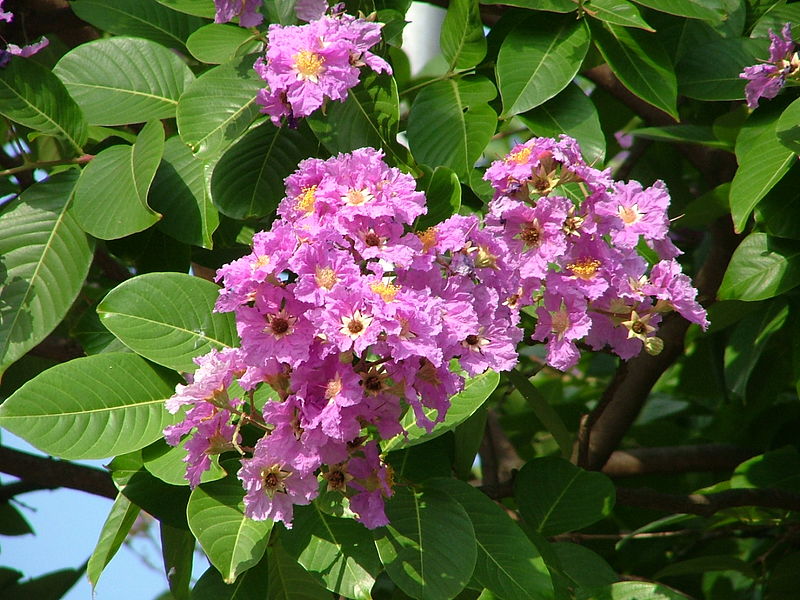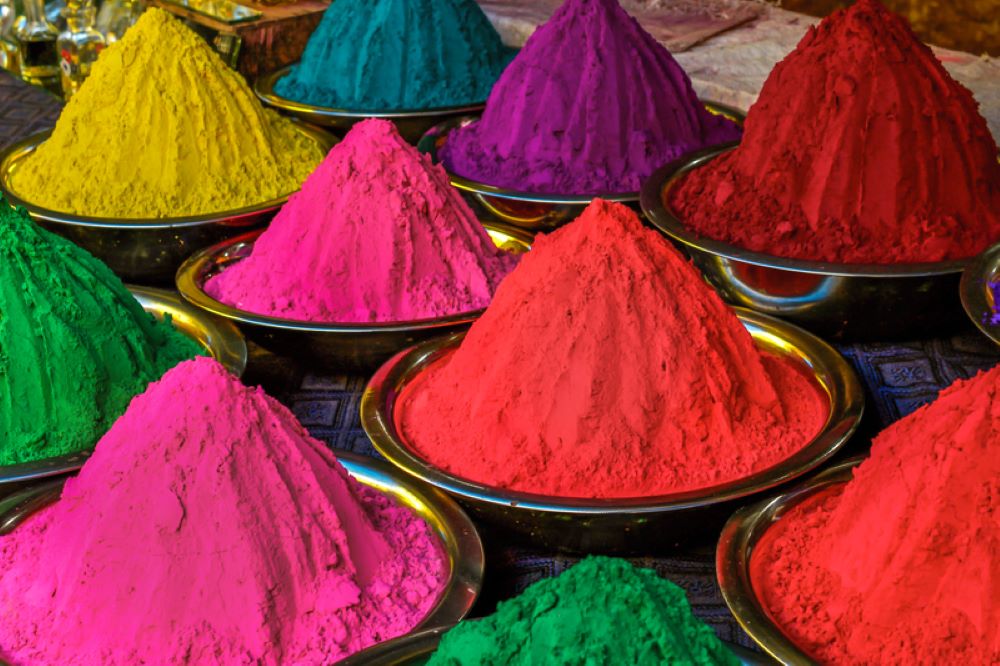Holi is known as the festival of colours, but it is also at the time of the year when the flowering trees bear colourful blossoms all over the Indian Subcontinent. Rooted in Hindu mythology, the festival has many regional variations and many different ways in which the harvest of winter crops is celebrated with colour. I argue that Holi is the festival of diversity as much as of colour.
The celebrations of Holi involve throwing powder paint and coloured water on each other much to the delight of children and grown-ups alike. The festival marks the arrival of spring and the end of winter as the dry tropical regions of the Indian Subcontinent start to warm up. Many flowering trees start to blossom around this time of the year: the Indian laburnum trees (Cassia fistula) with their golden yellow blossoms; the Pride of India trees (Lagerstroemia speciosa) with their light purple inflorescences; the flame of the forest trees (Butea monosperma) with their deep red flowers. They all paint the Indian countryside in shades of purple, red and yellow (see more in this article on the Top 10 beautiful flowering trees of India). So, it is not just people who end up getting their clothes painted by family and friends; Mother Nature also puts on a magnificent show of colours.
 The Pride of India tree (Lagerstroemia speciosa) in blossom.
The Pride of India tree (Lagerstroemia speciosa) in blossom.
Spring is also the time of the year when the winter crops are ready for the harvest on the Indian Subcontinent: cereals such as wheat, oilseeds such as rapeseed, or legumes such as chickpeas are all harvested starting from the month of March. After harvest, the leftovers of the crops are burned in the fields. Under the hot sun, soil dries quickly and turns into dust which is mixed with ash from the charred fields. The dust mixed with ash is a perfect substance to use as powder paint. Before the synthetic colours came along, the mixture of dust and ash would have been mixed with turmeric, saffron or indigo to make the powder paints. So, the colours of Holi are very much grounded in the agricultural cycle of harvesting crops and the post-harvest celebrations. The bounty of colour in nature with the blossoming trees all around adds to that celebratory feel – it is as if people and nature are celebrating Holi together.
Holi has mythological significance and the stories of why Holi is celebrated involve enduring narratives from ancient Indian scriptures. There are many regional variations in how Holi is celebrated. Colour is one common element in all these variations and fire is another. As bonfires are lit all across the Indian Subcontinent on the eve of Holi, people roast corn cobs or other freshly harvested grains and enjoy them with family and friends. The practice of burning the leftovers of harvested crops must have been an inspiration for the bonfires. Fire also symbolises purification, rejuvenation, and the triumph of good over evil in many mythological narratives. So, Holi is not just one festival; it is a festival that has many regional variations rooted in Hindu mythology.

Today, Holi is celebrated all around the world by the Indian diaspora, and it has become a festival that brings people together, no matter what their age, gender or class. It gives people an excuse to sing, dance, feast and throw powder paint and coloured water on each other – a practice that would otherwise be frowned upon in polite society! Holi is an occasion to cherish and celebrate the diversity of colours, of peoples and of traditions.




Rate and Review
Rate this article
Review this article
Log into OpenLearn to leave reviews and join in the conversation.
Article reviews